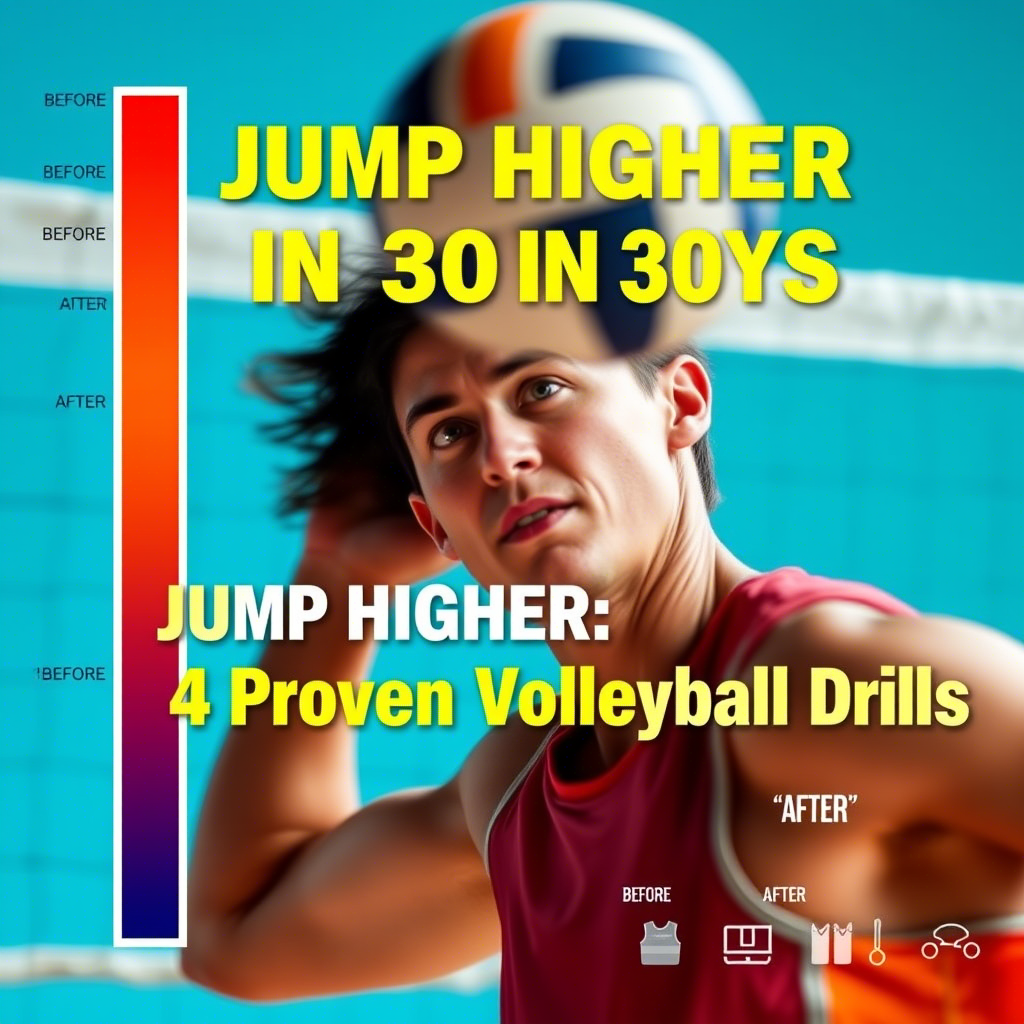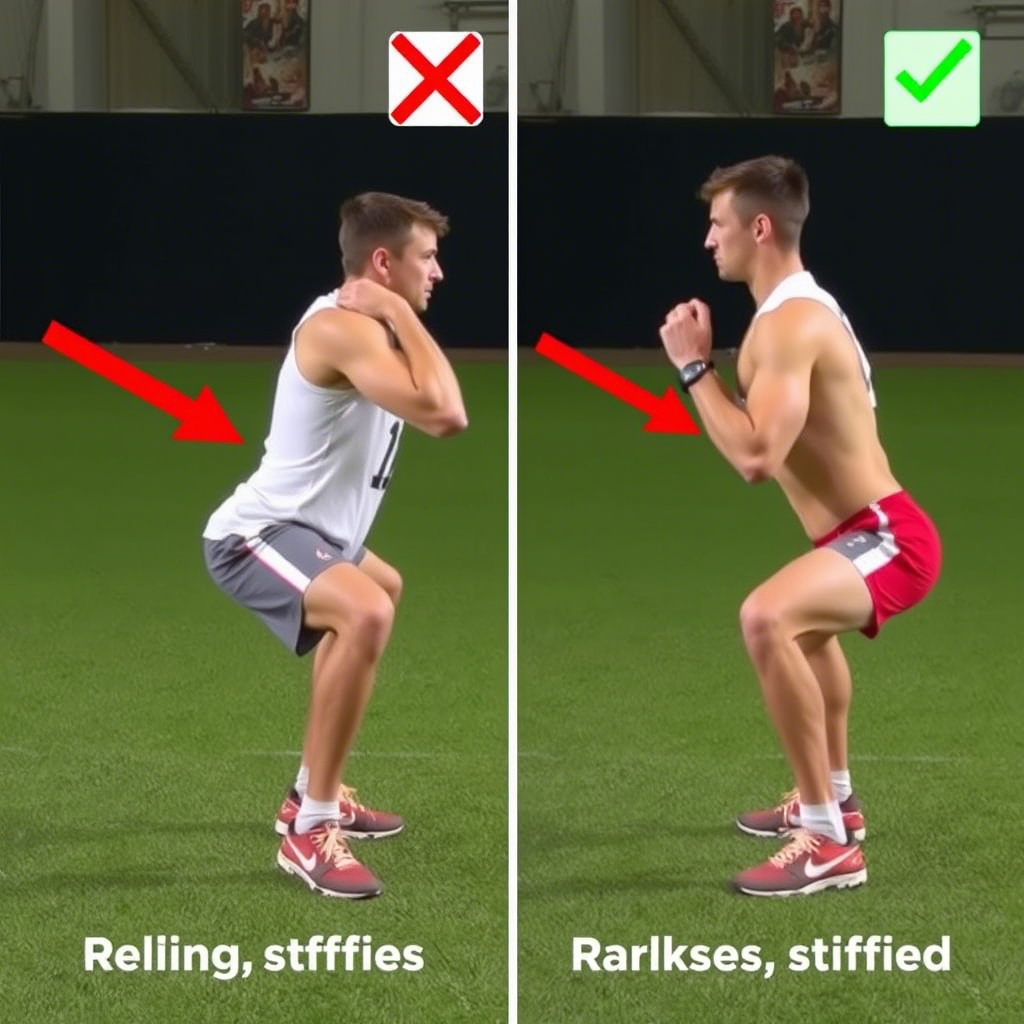4 Proven Ways to Boost Your Vertical Jump for Volleyball
A powerful vertical jump isn’t just a flashy skill in volleyball—it’s a game-changer. Imagine this: It’s match point, and the ball is set perfectly near the net. You sprint forward, plant your feet, and explode upward. For a split second, time slows as your hand rises above the blocker’s fingertips. Smack. The ball rockets to the floor, sealing the win. That moment? It’s built on the hours you invest in training your jump. The good news? You don’t need elite genetics or a pro athlete’s regimen to jump higher. With the right mix of strength, technique, and consistency, you can outwork your limits. Let’s break down four actionable (and science-backed) strategies to help you soar.
1. Build Explosive Leg Strength: Beyond Basic Squats
Strong legs are the foundation of a high vertical, but volleyball demands explosive power—think fast-twitch muscle fibers firing in sync. Traditional squats are a start, but here’s how to level up:

Plyometrics: Train Like You Play
Plyometric exercises mimic the rapid “stretch-shortening cycle” of muscles during jumps. For example:
- Box Jumps: Start with a knee-height box. Jump onto it, landing softly with knees bent. Step down (don’t jump back) to reduce injury risk. Aim for 3 sets of 8–10 reps.
- Depth Jumps: Step off a 12–18 inch box, immediately explode upward upon landing. Teaches your body to convert downward momentum into upward force.
- Lateral Bounds: Leap sideways, landing on one foot. Improves stability for off-angle jumps during blocks or digs.
Pro Tip: Quality > quantity. Focus on maximum height and quick ground contact. If your jumps get sloppy, stop the set.
Single-Leg Strength: Fix Imbalances
Volleyball jumps often happen off one leg (e.g., a quick approach after a dig). Weakness on one side can sap power and increase injury risk. Try:
- Bulgarian Split Squats: Place one foot behind you on a bench, lower until your front thigh is parallel to the ground. Add dumbbells for intensity.
- Single-Leg Hops: Hop forward, sideways, or in a zig-zag pattern. Improves balance and tendon resilience.
Mistake Alert: Leaning too far forward during single-leg exercises strains the knees. Keep your torso upright.
Weighted Training: Add Resistance
Use a weighted vest (5–10% of your body weight) during jump squats or lunges. The extra load forces muscles to work harder, but keep it light enough to maintain speed.
Sample Leg Day Routine:
- Warm-up: 10 minutes of dynamic stretches (leg swings, high knees).
- Back Squats: 4 sets of 6 reps (heavy weight, focus on explosive upward drive).
- Box Jumps: 3 sets of 8 reps.
- Single-Leg Romanian Deadlifts: 3 sets of 10 reps per leg.
- Cool-down: Foam roll quads, hamstrings, and calves.
Related post :- {2024-25 Women’s Basketball Roster Revealed: Complete Team Lineup & Key Stats}
2. Perfect Your Jump Mechanics: Small Tweaks, Big Results
Poor technique can sabotage even the strongest legs. Let’s optimize your approach, arm swing, and landing:

The 3-Step Approach: Timing is Everything
Most players use a 3-step approach (left-right-left for right-handed spikers). Here’s how to nail it:
- First Step (Slow): A short, controlled step to position yourself.
- Second Step (Long): Accelerate into a longer stride to build momentum.
- Third Step (Plant): Drive your foot into the floor, swinging arms backward, then upward as you jump.
Drill: Practice without the ball. Focus on syncing your steps with an exaggerated arm swing. Record yourself to check for forward lean or off-center landings.
Arm Swing: Your Secret Weapon
Your arms contribute up to 10% of your jump height. Think of them as levers:
- Swing Back: As you plant your final step, swing arms behind you (like pulling a bowstring).
- Thrust Upward: Explode your arms toward the ceiling as you jump. The faster and higher they go, the more lift you’ll generate.
Pro Tip: Hold a light medicine ball (2–4 lbs) during approach drills to strengthen your swing.
Land Like a Pro: Protect Your Joints
Landing stiff-legged isn’t just inefficient—it’s dangerous. Practice “soft landings”:
- Bend knees and hips to absorb impact.
- Keep knees aligned over toes (no inward collapsing!).
- Land on the balls of your feet, then roll to heels.
Try This: Drop from a low box (6–12 inches) and stick the landing silently. Gradually increase height.
3. Jump-Specific Conditioning: Endurance Meets Power
Volleyball requires repeated jumps throughout a match. Train your body to maintain power even when tired:

Jump Rope: More Than a Warm-Up
- Double-Unders: Swing the rope twice per jump. Boosts calf endurance and coordination.
- Single-Leg Skips: Improves balance and unilateral power.
- High-Intensity Intervals: 30 seconds of max-speed jumps, 30 seconds rest. Repeat 10x.
Game-Like Drills
- Block-to-Sprint: Jump for a block, immediately sprint to the baseline. Repeat for 60 seconds.
- 4-Corner Jumps: Place markers in a square. Jump diagonally, laterally, and forward.
Core Strength: The Missing Link
A weak core leaks power. Try:
- Medicine Ball Slams: Overhead slams engage shoulders, abs, and obliques.
- Hollow Body Holds: Lie on your back, lift legs and shoulders off the ground. Hold 30 seconds.
Did You Know? A study in the Journal of Strength and Conditioning Research found that athletes who added core training improved vertical jump height by 7% in 8 weeks (source).
4. Recovery: The Key to Consistent Gains
You don’t get stronger during workouts—you get stronger during rest. Here’s how to recover like a pro:

Sleep: Your Growth Hormone Boost
Aim for 7–9 hours nightly. Deep sleep stages trigger muscle repair and HGH release. Struggling to sleep? Try:
- Cutting screen time 1 hour before bed.
- Keeping your room cool (65–68°F).
Nutrition: Fuel for Explosiveness
- Post-Workout: Consume 20–30g of protein (e.g., Greek yogurt, whey shake) within 30 minutes.
- Carbs Are Your Friend: Oats, sweet potatoes, and quinoa replenish glycogen stores.
- Hydration: Dehydration reduces power output. Drink half your body weight (in lbs) in ounces daily.
Mobility Work
- Foam Roll Quads/Hamstrings: 2 minutes per leg.
- Hip Flexor Stretch: Kneel, push hips forward. Hold 30 seconds per side.
- Dynamic Warm-Ups: Leg swings, inchworms, and hip circles prep muscles for explosive moves.
Recovery Hack: Contrast showers (alternate 1 minute hot, 1 minute cold) reduce soreness.
Sample 6-Week Training Plan
| Week | Focus | Key Adjustments |
|---|---|---|
| 1–2 | Base Strength & Form | Master technique. Use lighter weights, higher reps (12–15). |
| 3–4 | Power Development | Add plyometrics. Reduce reps to 6–8, increase weight. |
| 5–6 | Sport-Specific Conditioning | Simulate game scenarios (e.g., jump-block sequences). Prioritize rest between sets. |
Weekly Routine:

- Monday: Strength training (squats, deadlifts) + plyometrics.
- Tuesday: Jump technique drills + agility ladder work.
- Wednesday: Active recovery (yoga, swimming).
- Thursday: Explosive power (box jumps, weighted vest drills) + core.
- Friday: Game simulations (spike/block practice).
- Weekend: Rest or light activity (hiking, cycling).
Track progress by testing your vertical every 2 weeks. Use a chalk mark on a wall or a vertical jump tester.
5 Common Mistakes Killing Your Vertical
- Skipping Warm-Ups: Cold muscles are 30% weaker. Spend 10–15 minutes on dynamic stretches.

“Train Smarter: Repetition Meets Precision” - Overtraining: Jumping 7 days a week leads to burnout. Limit intense sessions to 3–4 weekly.
- Neglecting Glutes: Weak glutes force quads to overwork. Add banded crab walks to your routine.
- Poor Footwear: Worn-out shoes lack support. Replace volleyball shoes every 6–12 months.
- Ignoring Flexibility: Tight ankles restrict jump height. Stretch calves daily.
FAQs: Your Questions, Answered
Q: Can I improve my vertical if I’m over 30?
A: Absolutely! Focus on low-impact plyometrics (e.g., resistance band jumps) and prioritize recovery.
Q: Do jump programs like Vert Shock work?
A: They can, but results depend on effort and consistency. Pair programs with strength training.
Q: How does body fat affect vertical jumps?
A: Excess weight strains joints and slows takeoff. A balanced diet paired with training maximizes power-to-weight ratio.
For more tips, explore:
- The Jump Manual (paid program with proven results).
- YouTube: Elevate Yourself (free tutorials on jump mechanics).
Final Word
Improving your vertical jump is a marathon, not a sprint. Celebrate small wins—a higher reach, a quicker recovery, a cleaner landing. Stay consistent, listen to your body, and remember: Every great player was once a beginner who refused to quit. Now go out there and own the net. 🏐
Ready to jump higher? Share your goals in the comments below, and tag a teammate who needs this guide!